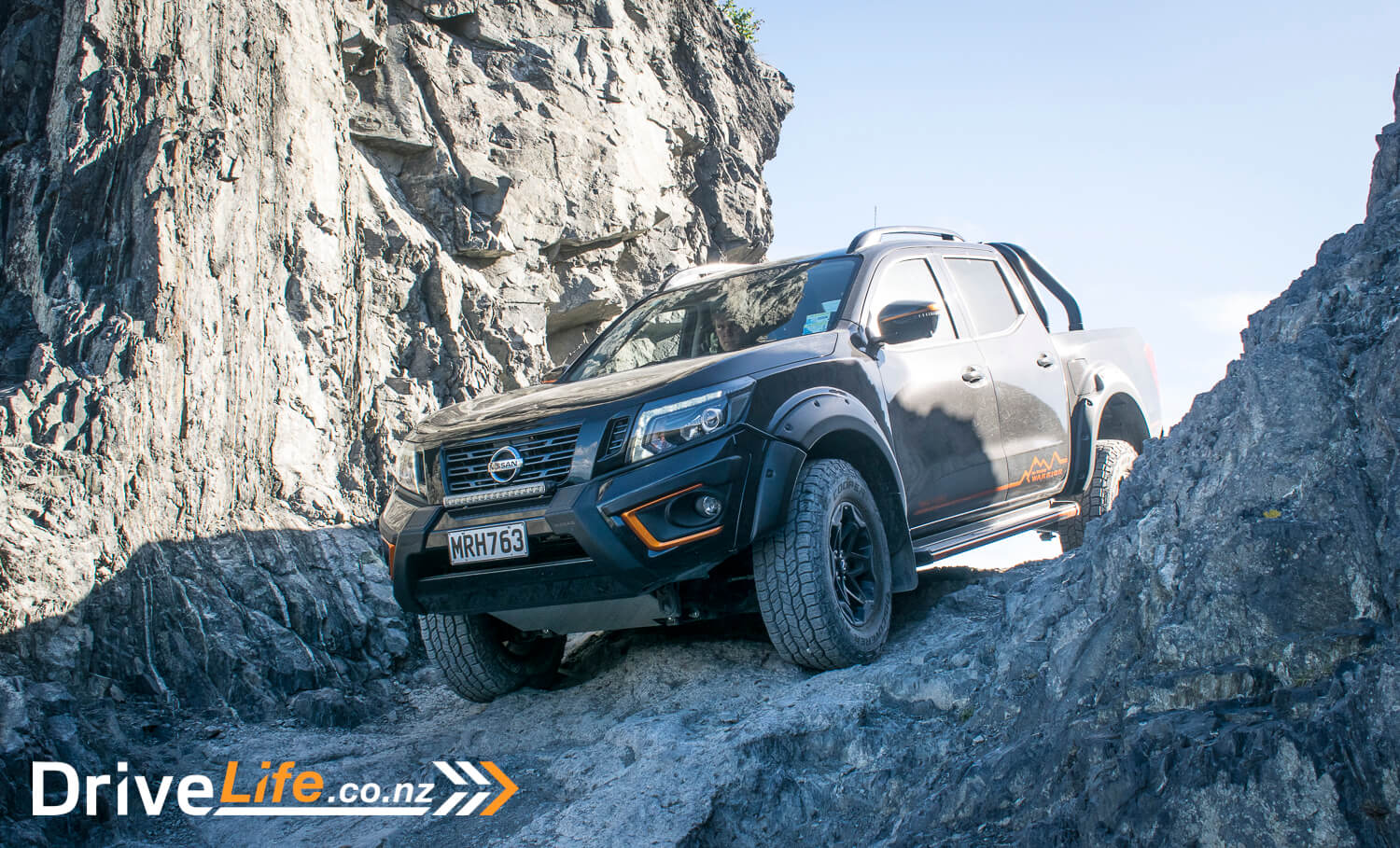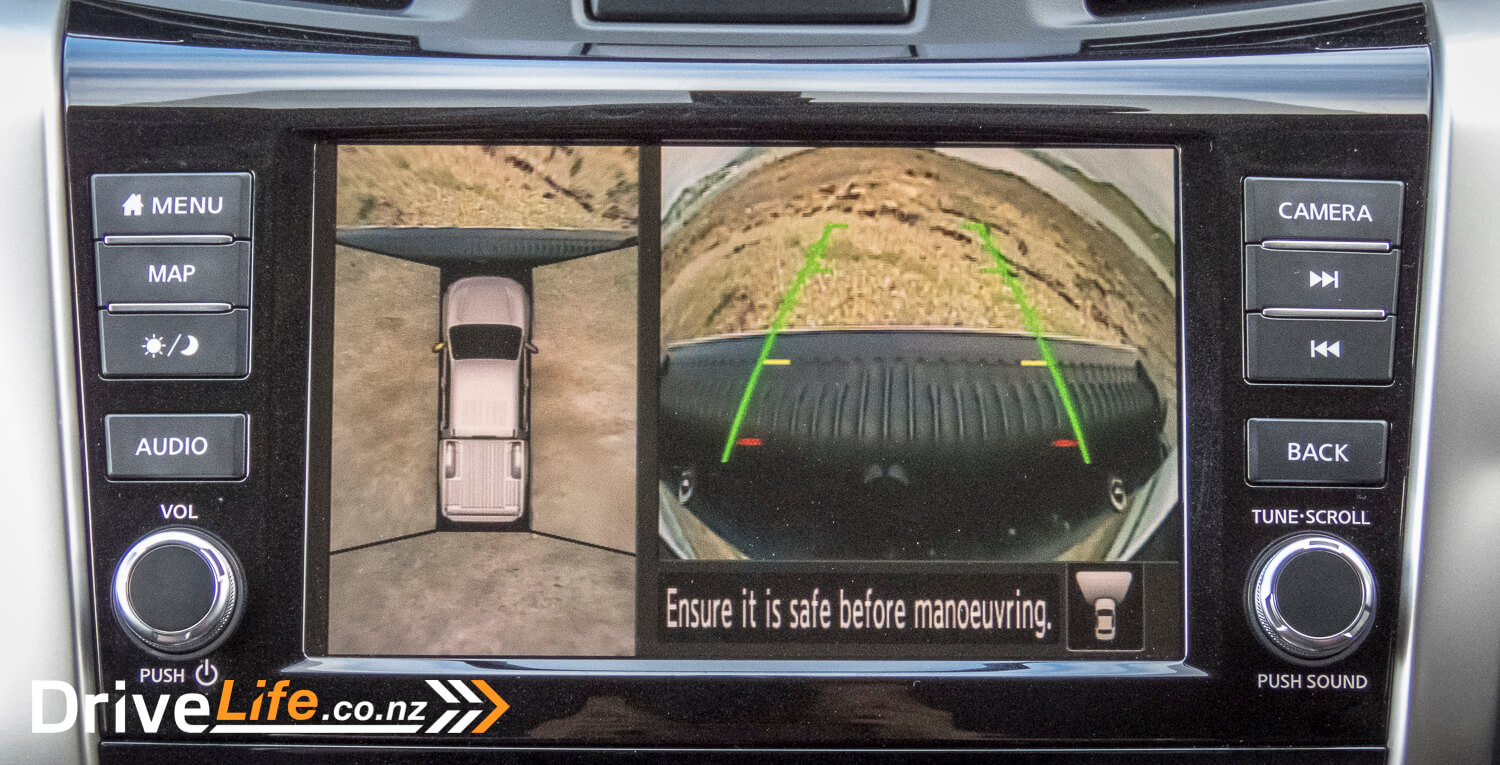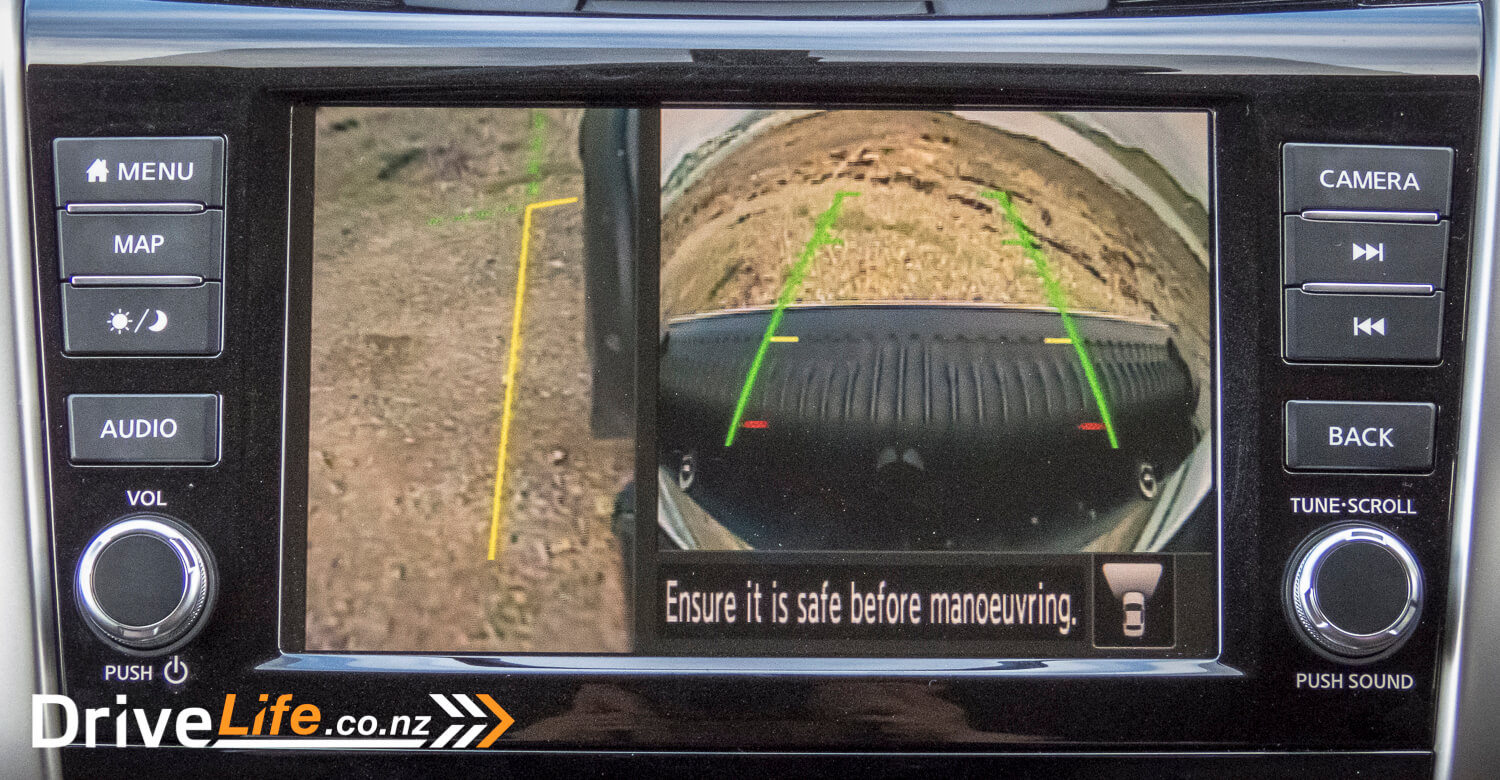Much like the market for SUV’s, consumers cannot seem to get enough of the ute. In fact, it’s one of the few segments of the new vehicle market which is still growing.
With the attraction for utes, more buyers have come to the marketplace prepared to spend north of $70,000 for their do-it all utility vehicle.
The manufacturers have responded rather astutely; Ford has Ranger Raptor, Toyota recently released their Hilux Mako while the now defunct Holden had the HSV SportsCat. Their responses developed a new segment of super-ute.
Fortunately, Nissan knows a thing or two about building a ute. Their Navara has a loyal following, and has been sparring with the established competitors since 1985. So, how’d Nissan respond to the competition? Nissan dropped by an Australia engineering constancy called PremCar with their Navara. After presumably a dark and stormy night, the PremCar boffins shouted “it’s alive”. The result being the Nissan Navara N-trek Warrior.
We were pretty chuffed when Nissan New Zealand threw us the keys to their Warrior.
So who wins in the game of Raptor vs Warrior? Let’s see how Nissan’s ultimate Navara performs.
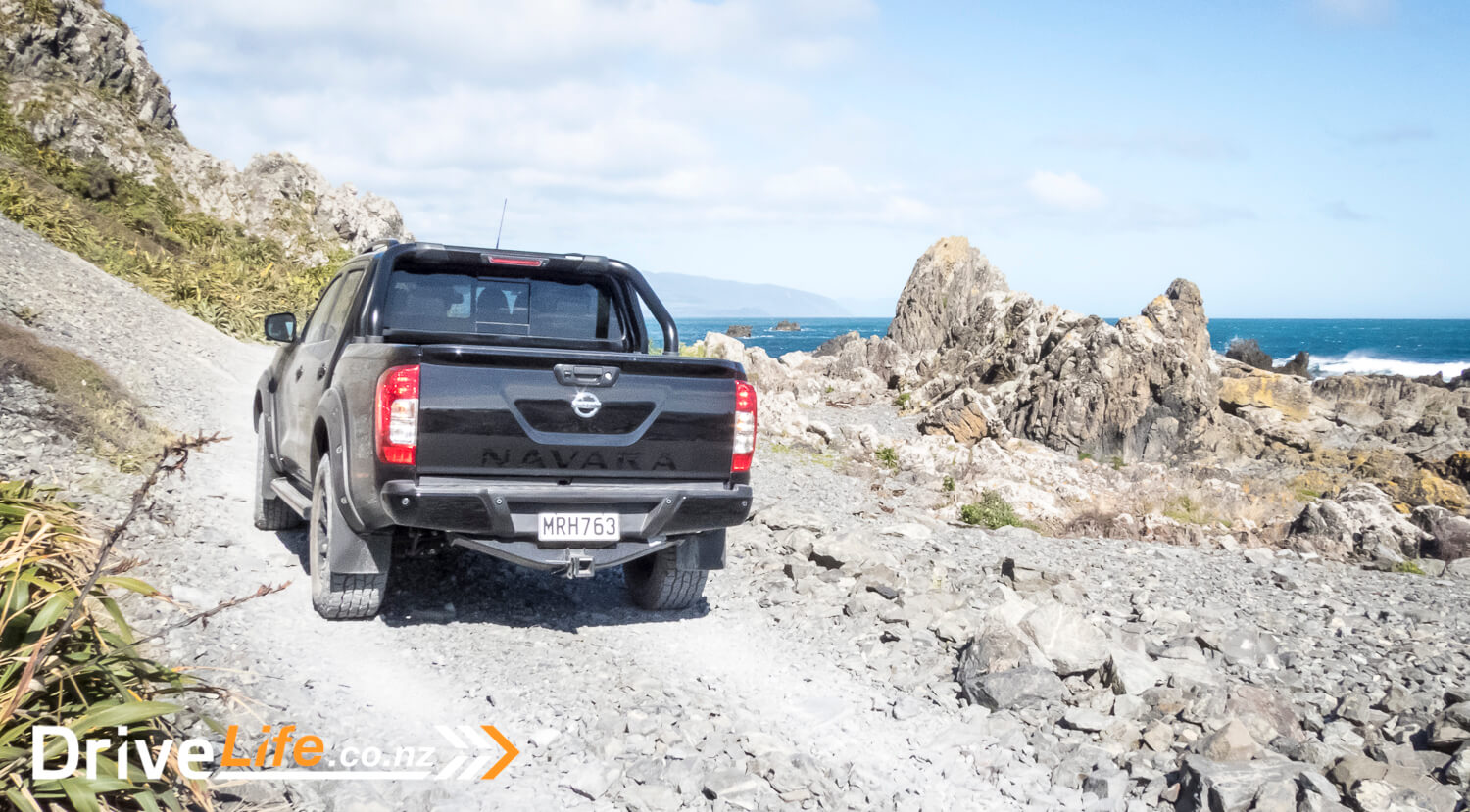
What’s in The 2020 Nissan Navara Range?
There are many Navaras in Nissan’s line-up, but there’s only one Warrior. As clichéd as that sentence sounds, the Navara Warrior is a halo model which tops the Navara range, much like the Ford Ranger Raptor or the Toyota Hilux Mako.
The Warrior model is priced at $76,990, which is a whole $42,000 above the cheapest 2WD Navara ute. However, comparing the two is almost like comparing apples to oranges.
Being the most expensive Navara, the interior has a fairly extensive list of bells and whistles, including 17’’ alloys, 8’’ infotainment with Bluetooth, Apple Carplay and Android Auto, 6-speaker audio, 8-way powered driver’s seat, heated front seats, cruise control, dual zone climate control, remote keyless entry and push button start, 3 x 12V power outlets, privacy glass, auto LED projector headlights, Utili-Track tray-mounts, 360-degree camera, front, side and reverse camera, auto-dimming rear-view mirror, rear parking sensors, hill start assist, ISOFIX, a unique towbar, plus a boat-load of blacked-out body trims and unique N-Trek Warrior decals and Orange Accents.
The Navara Warrior is powered by Nissan’s 2.3L Twin-Turbo Diesel Engine, producing 140kW of power and 450Nm of torque. This engine is paired with a 7-speed automatic transmission.
This allows for a tow rating of 3500kg braked, 750kg unbraked, which is in line with the rest of the Navara range.
Of course, it wouldn’t be the off-road weapon without all the gear to go with it. The Navara Warrior receives 32.2’’ Cooper AT3 LT tyres, Monroe Shocks, Tenneco Dampers, a hoopless steel bull-bar with 470mm integrated LED light bar, a 3mm stainless 304 steel front underbody protection plate, an electronic locking differential, hill descent control, plus selectable gearing ratios of 2H – 4H and 4L controlled via switch knob.
There are three colours available for your Warrior. These are Granite (Matte Grey), White Diamond or Panther Black.
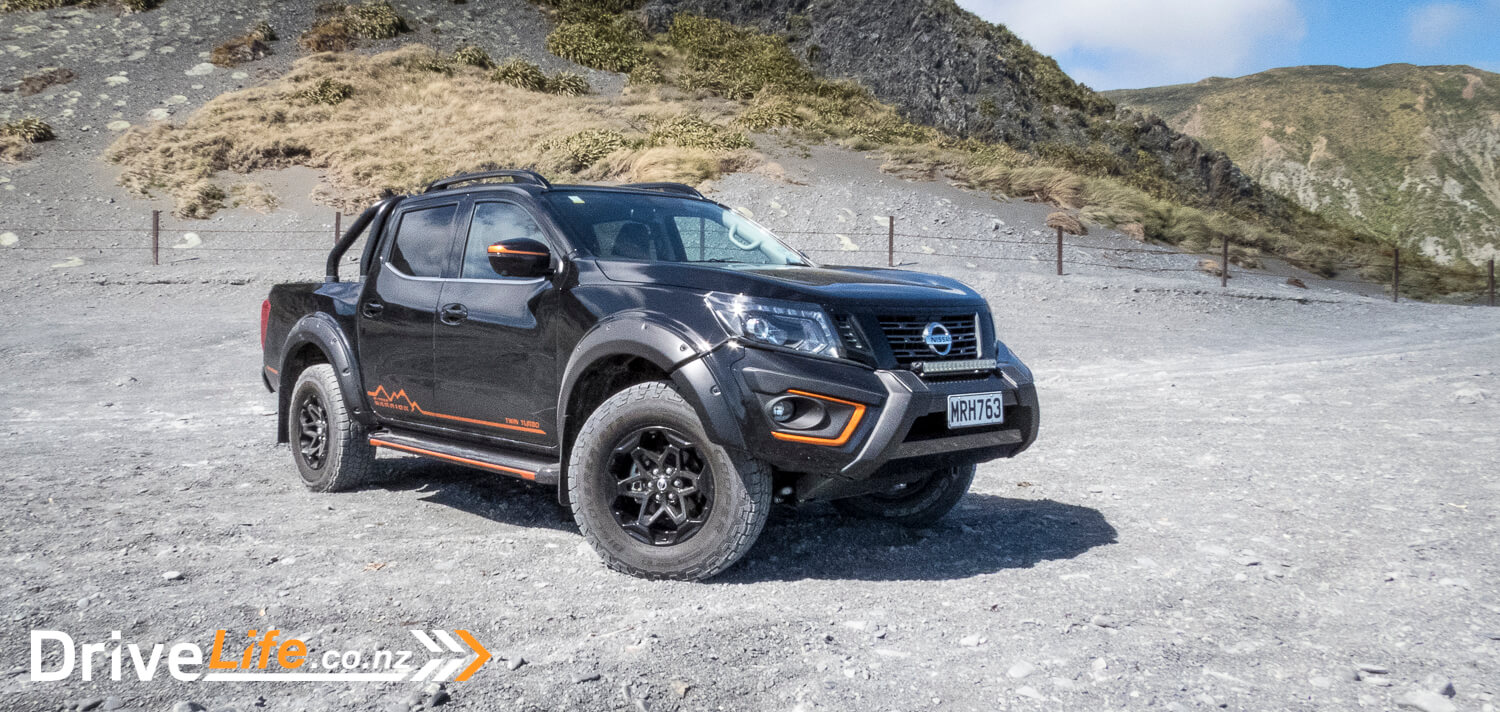
First Impressions Of The 2020 Nissan Navara Warrior
‘Tough’ is often thrown around by marketing departments to describe fairly ordinary utes. Although the standard Navara range is one of the better-looking utes designs to my eyes, the styling is on the conservative side.
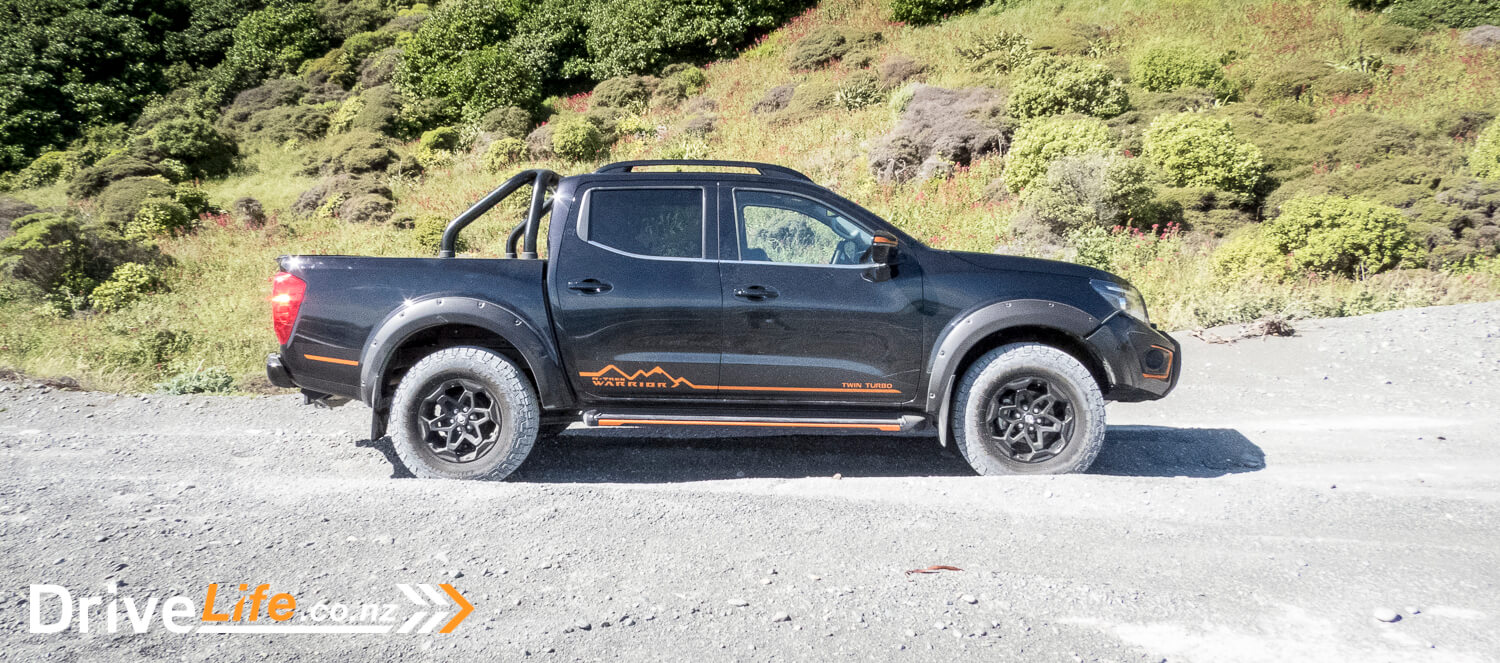
The Warrior flips that notion on its head. The lifted body sitting on chunky 32’’ tyres, the massive arch flares with exposed rivets, the custom front bumper with light bar, plus steel skid-plate exposed from below makes the Warrior look seriously staunch. Then, black-out all the exterior trims including the sports bar, add special decals and garnish it with sharp orange accents, and the Warrior really pops.
The Warrior is the Navara that’s been hitting the gym and drinking smoothies of spinach and bricks for breakfast. It looks tough, because it is tough.
There’s only one detail of the Warrior that seemed peculiar. There’s a long stretch of rubber between the custom front bumper and rest of the grille. Fortunately, you’ll only notice it if you look closely.
It’s actually one of the most complimented vehicles I’ve tested based on its appearance. I even got an “it suits you”, although I’ve yet to determine whether that was a compliment. In short, this thing looks badass. Especially in Black. And, it’s not only me thinking that either.
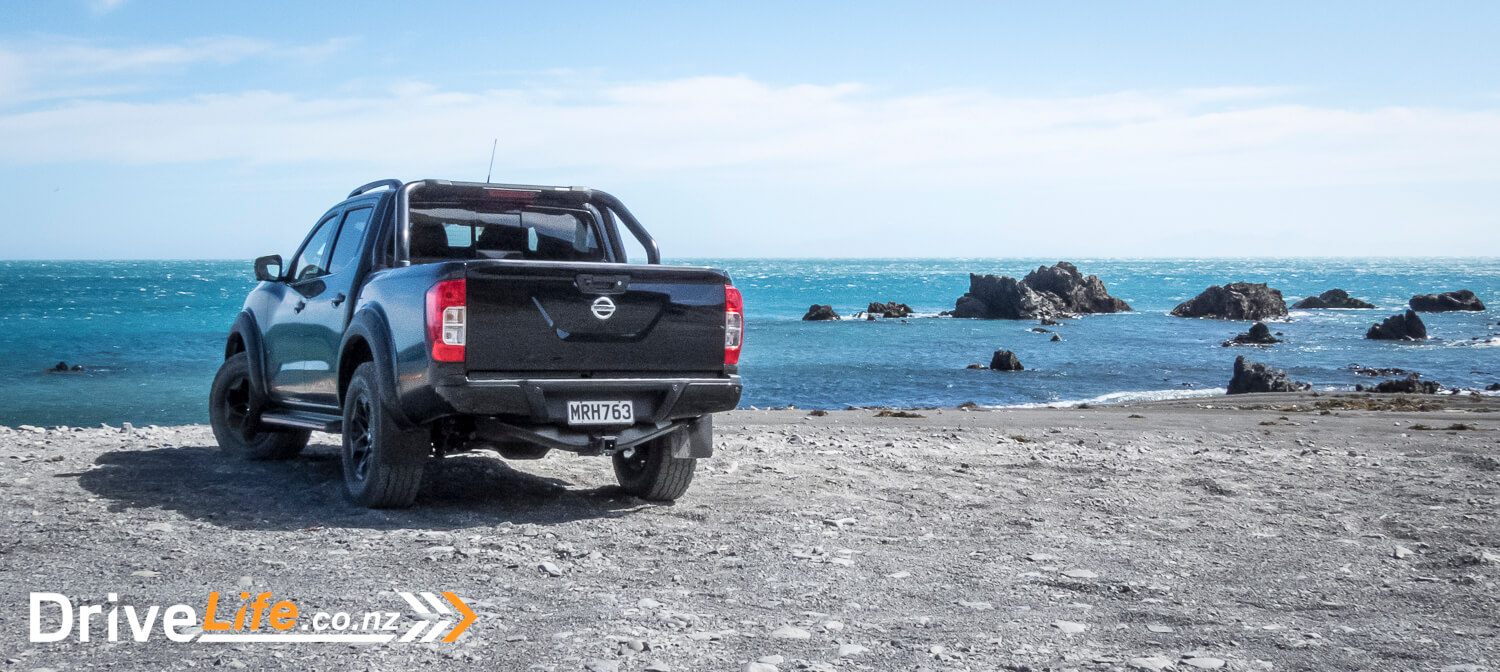
What’s The Interior Like On A 2020 Nissan Navara Warrior?
Climb into the Warrior (and I mean climb), you’ll be greeted with an interior that feels not too dissimilar to a family hatchback.

In fact, it feels fairly car-like inside the Warrior. The driving position is slightly hunkered down, more than you’d expect after climbing into such a massive ute.
The dashboard is a continuous piece of hard black plastic, which looks a bit like what you’d find in a $30,000-dollar hatchback. It’s hardly unpleasant, but not exactly what you’d call $76,000 worth of dash. Yet, it’s not all bad news, the wide centre stack with its matte chrome and gloss black plastic finishes off-set the black dashboard well.
Despite a select range of cheap materials, Nissan has covered many of the touchpoints. Leather lines the centre armrest and doorcards, while the interior door handles are trimmed with chrome. The steering wheel is also leather wrapped, and feels slightly thin compared with other utes – again, another car-like quality.

Much like the exterior, there’s plenty of orange accents on the inside of the Warrior too. There’s orange mesh on the lower sections of the leather seats, plus orange Warrior logos embossed onto the headrests. Orange stitching borders the seats, the steering wheel, door trims and floormats. It’s all quite tastefully executed, and it’s a bit more special than an ordinary Navara.
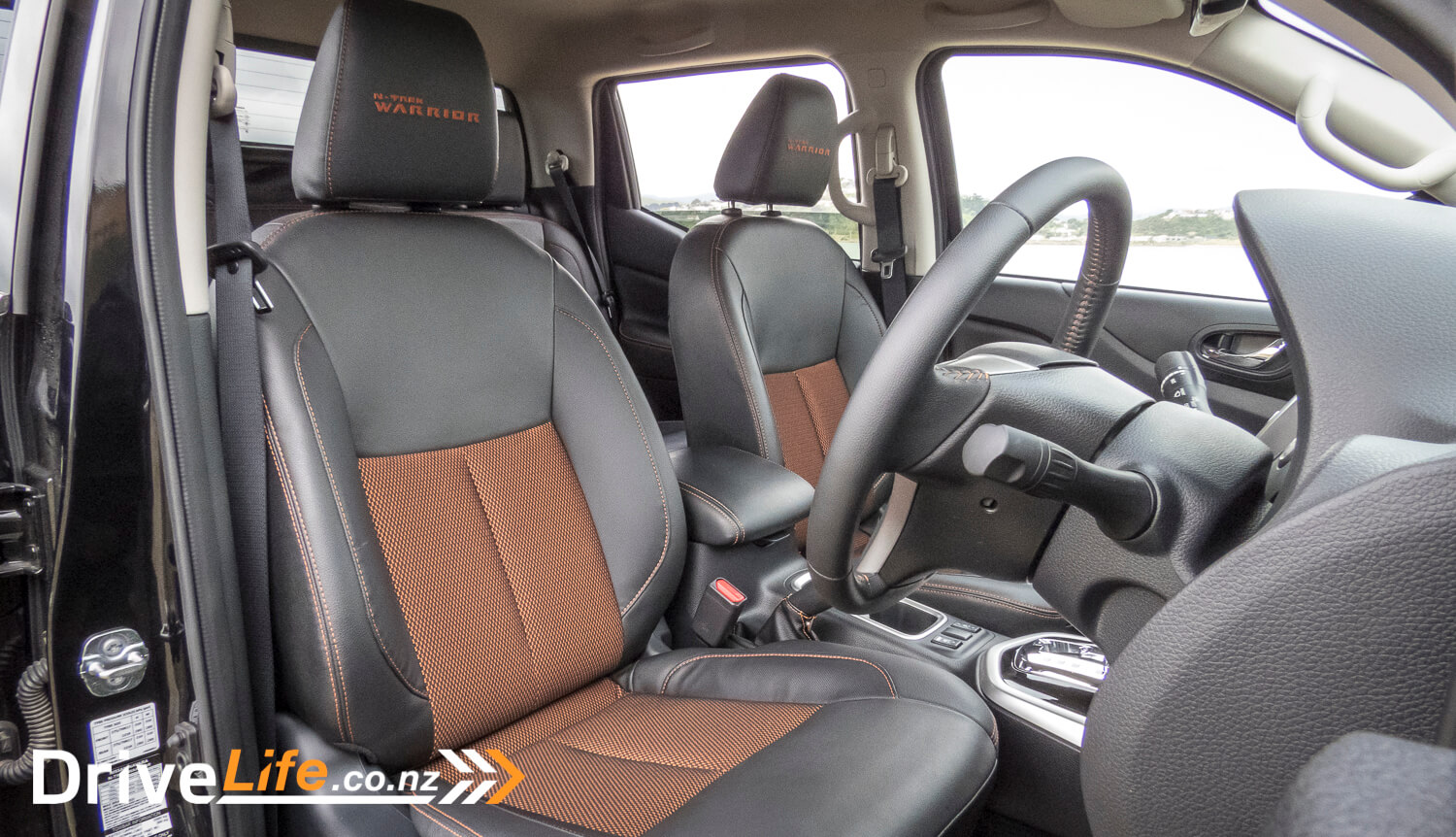
The Warrior’s citrus-themed front seats are wide and plush. I found them comfortable, even though there’s no real bolstering to them. Perhaps the toughest part about the seats is getting into them. There’s no grab handle on the driver’s side of the Warrior.
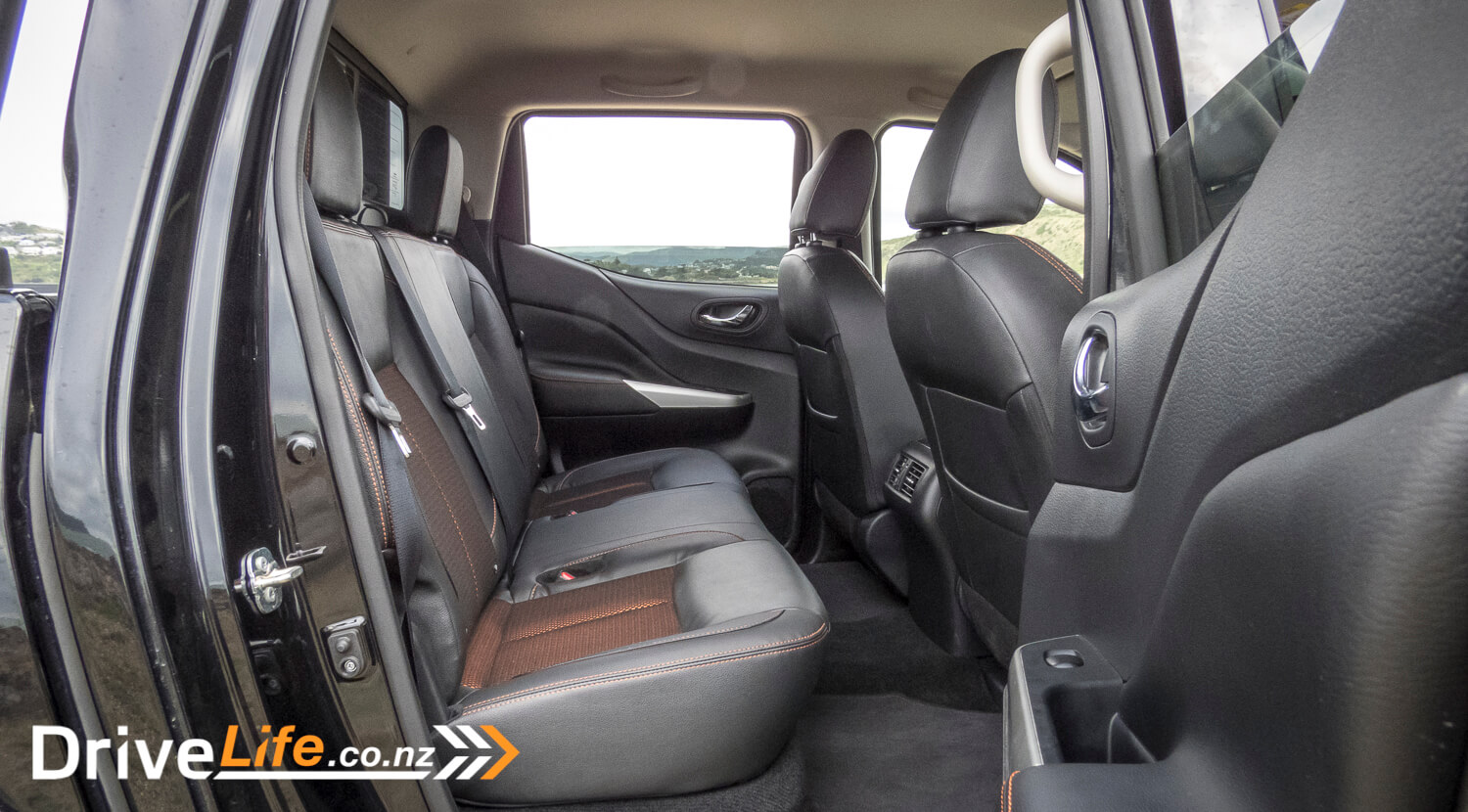
In the back, adults have decent headroom in the cheap seats. However, the seat-base is reasonably low, meaning your thighs run at oblique angle to the floor. In other words, it’s not the prime spot for a long trip.
In the centre stack, there’s an 8’’ infotainment unit which has Apple CarPlay and Android Auto. If you don’t default to these, Nissan’s user interface for the infotainment is reasonably pleasant. The touchscreen is decently responsive, plus the screen resolution is up to par. I personally found it nice to use. However, there were a few occasions where the unit would spontaneously crash and reboot while I was streaming music. I suspect this could just be a bug specific to this vehicle.
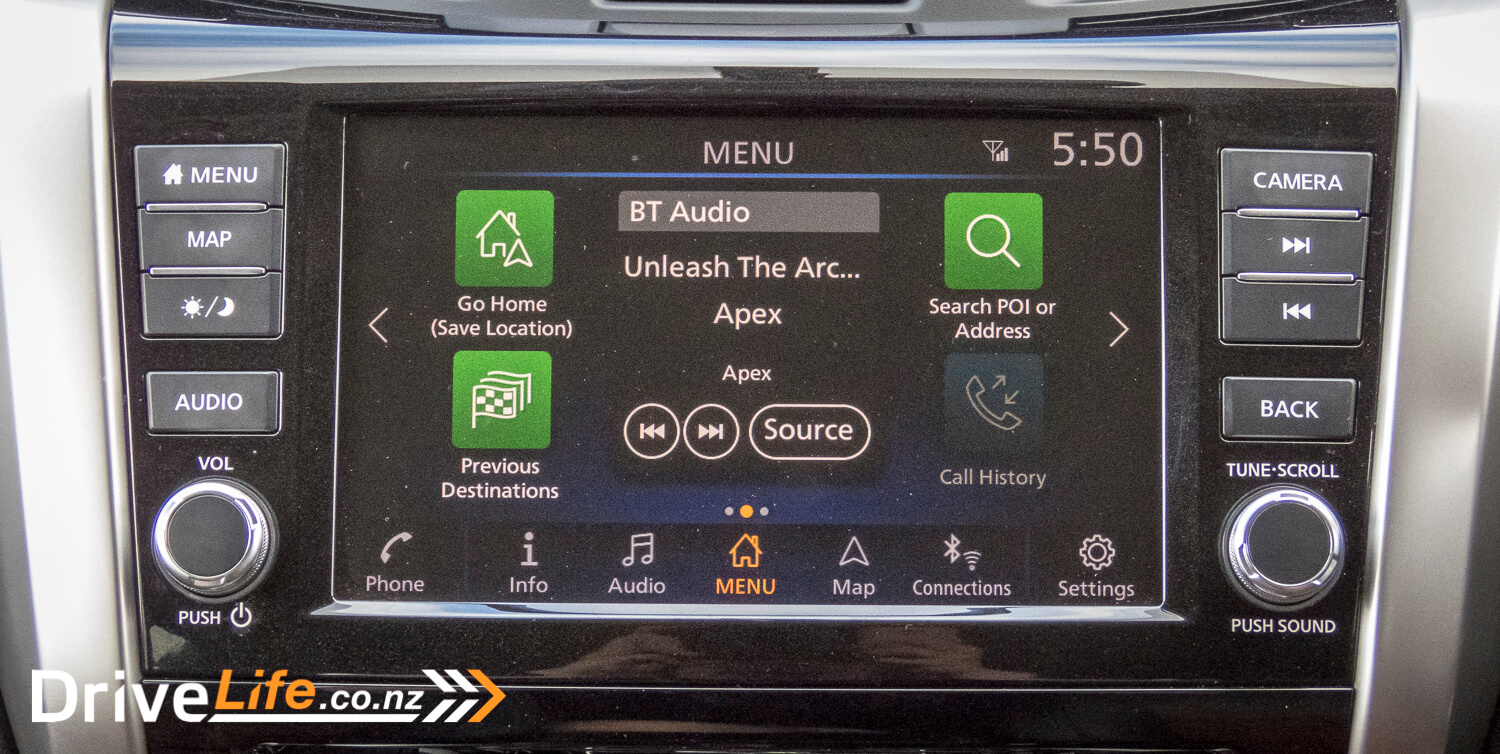
On the side of the infotainment are a series of hard buttons, including one for the front, side view camera. These cameras are practical for such a large vehicle, even though their resolution is quite grainy. The Warrior also comes with a birds-eye view 360o camera, which is a nice bonus.
Although, there’s one slight annoyance with the Warrior’s 360o camera. The front camera is slightly obscured by the bumper mounted light-bar, which impacts the augmentation on-screen. This means there’s an exploded view of the front lightbar on-screen.
On the subject of the lightbar, nothing happened the first time I switched it on. Turn on the headlights – click – still nothing. Turns out you need to activate the high-beams before the lightbar will switch on. This disappointed my inner man-child that wanted to play with it, but I suppose this way, Nissan forces you to behave.
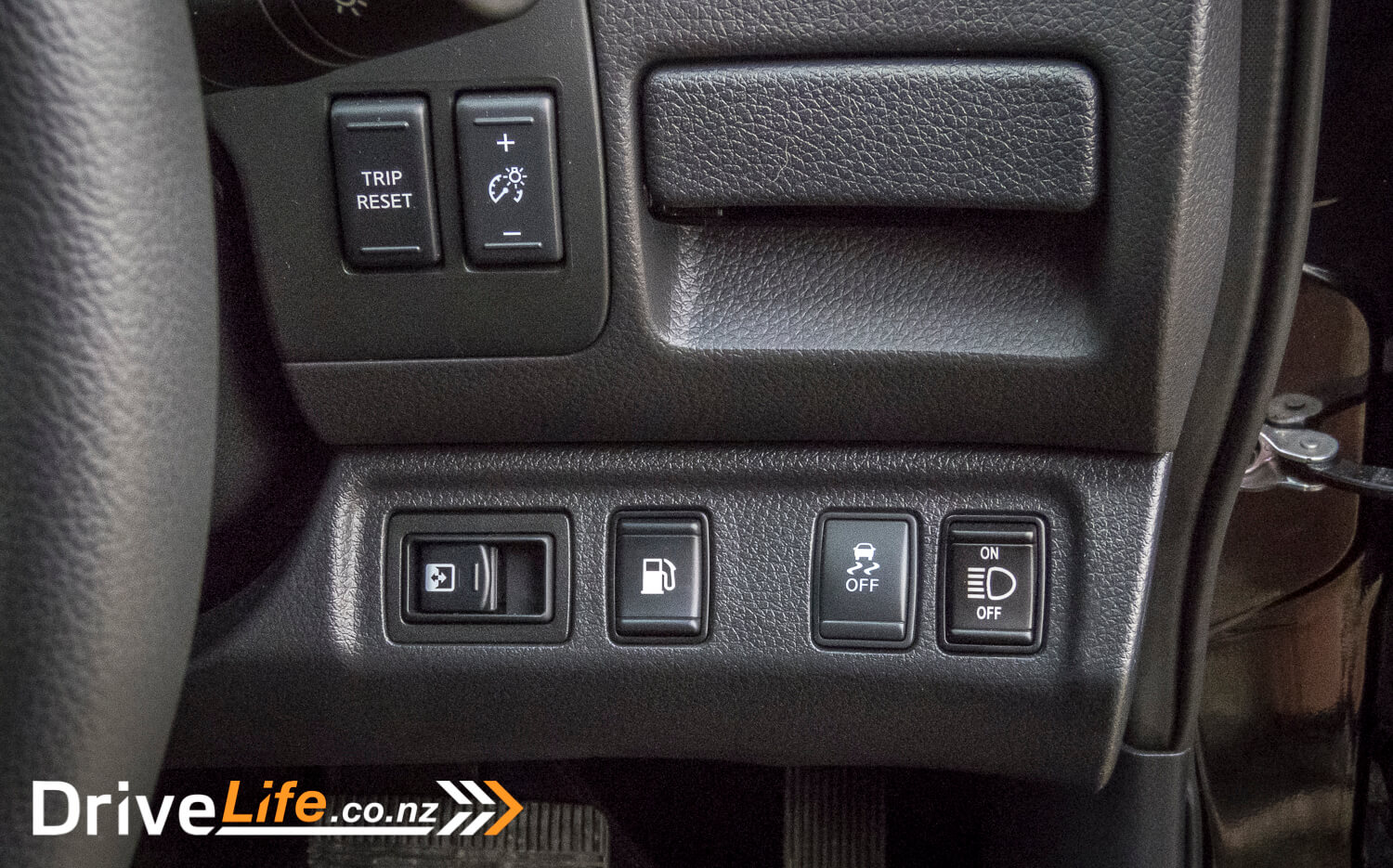
Nearby the lightbar switch is another for a sliding rear window, which opens up a little portal in the rear windshield. I personally love this feature. It’s a little window you can use for talking to your dog in the rear tray. There’s also an auto-dimming rear mirror for making sure Fido is still there.
So far, there’s plenty to like about the Warrior’s interior, but there are a few downsides.
The first of these is the instrument cluster. There’s nothing specifically wrong with it, but it definitely looks cheap and shows the age of this Navara platform. I’ve already mentioned the lack of a driver’s side grab-handle, meaning you’re grabbing the steering wheel if you’re not so steady.
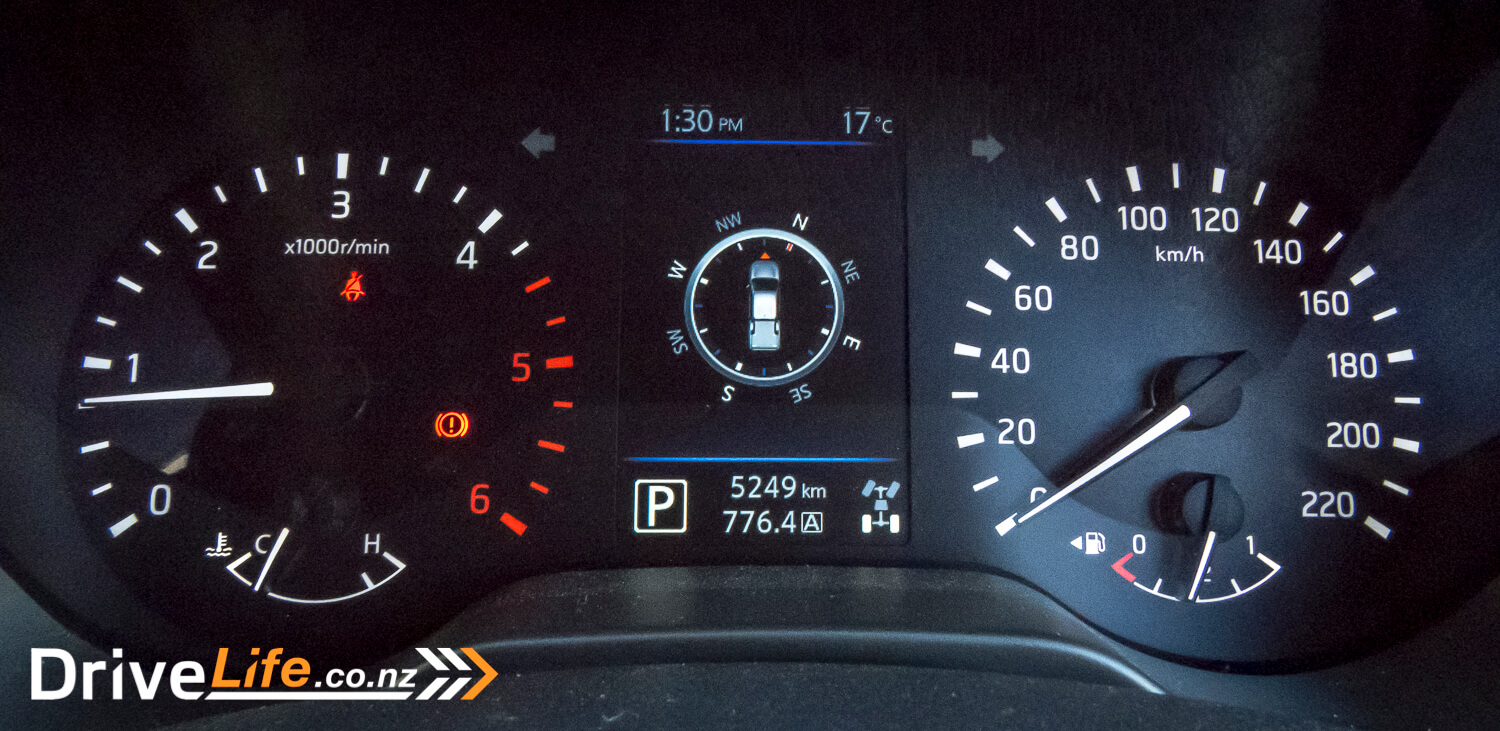
Perhaps the only true downside is the impractical interior storage spaces.
Atop the dashboard is a shallow storage space, which is which is home to the one of three 12-volt sockets. This spot is only good for keeping things which are small or won’t roll-about too much when driving. It’s also high up on the dash and obstructed by the windshield, meaning it’s a tad difficult to reach from the driver’s seat.
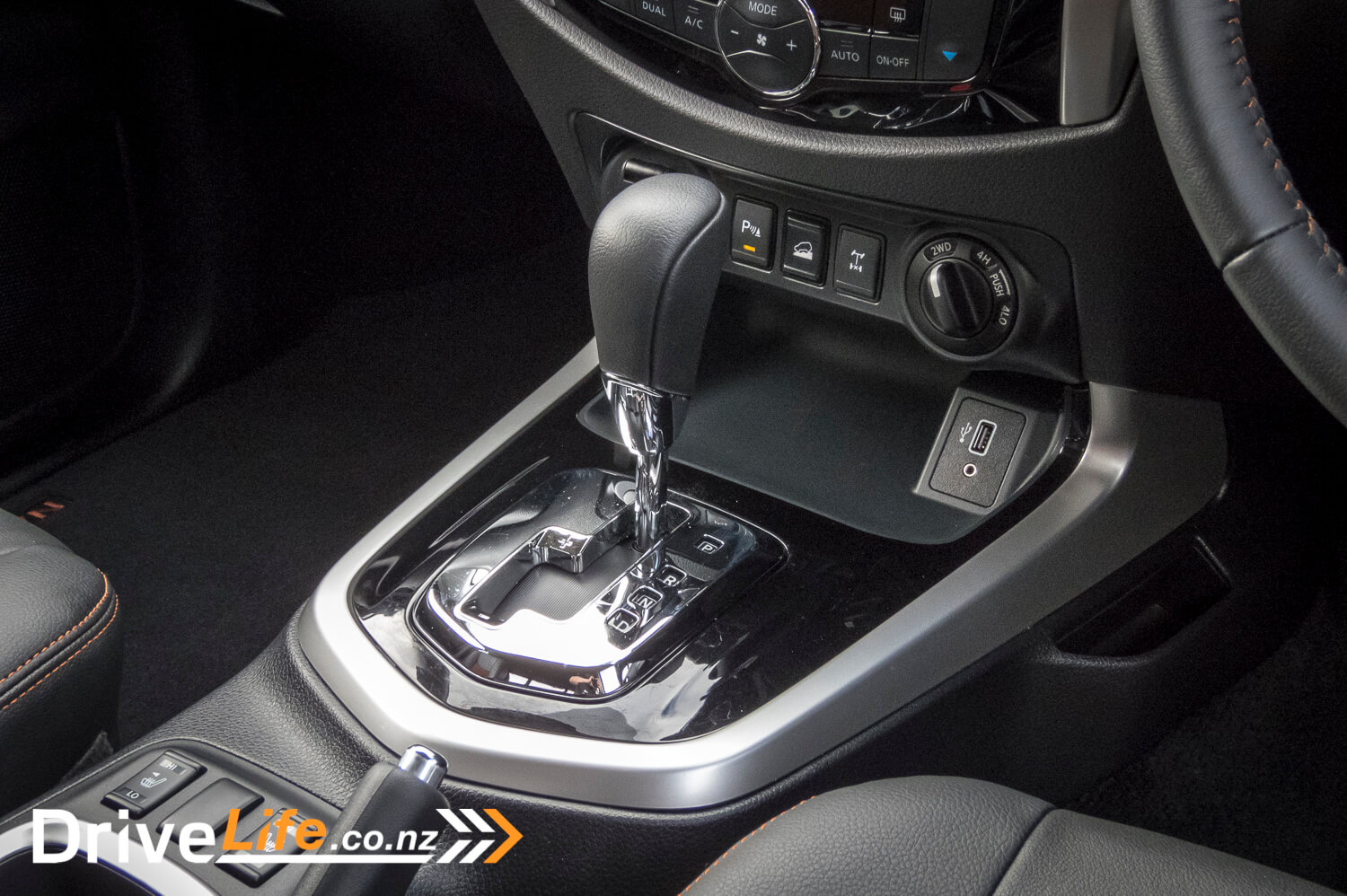
Below the switchboard housing all the off-road controls is another storage space, which is flanked by the interior’s only USB port. This spot, seemingly intended for a smartphone, is made of curved plastic. This meant I couldn’t get my medium sized smartphone to sit there, despite it being the logical spot. Instead, everything needed to be stashed in the centre storage bin, that while deep, is also narrow. Of course, there’s one redeeming interior storage feature. On the far sides of the dashboard, under the climate vents are little grab handles which are pop-out cup holders. I like these, even if they aren’t as cool as those on a Hilux.
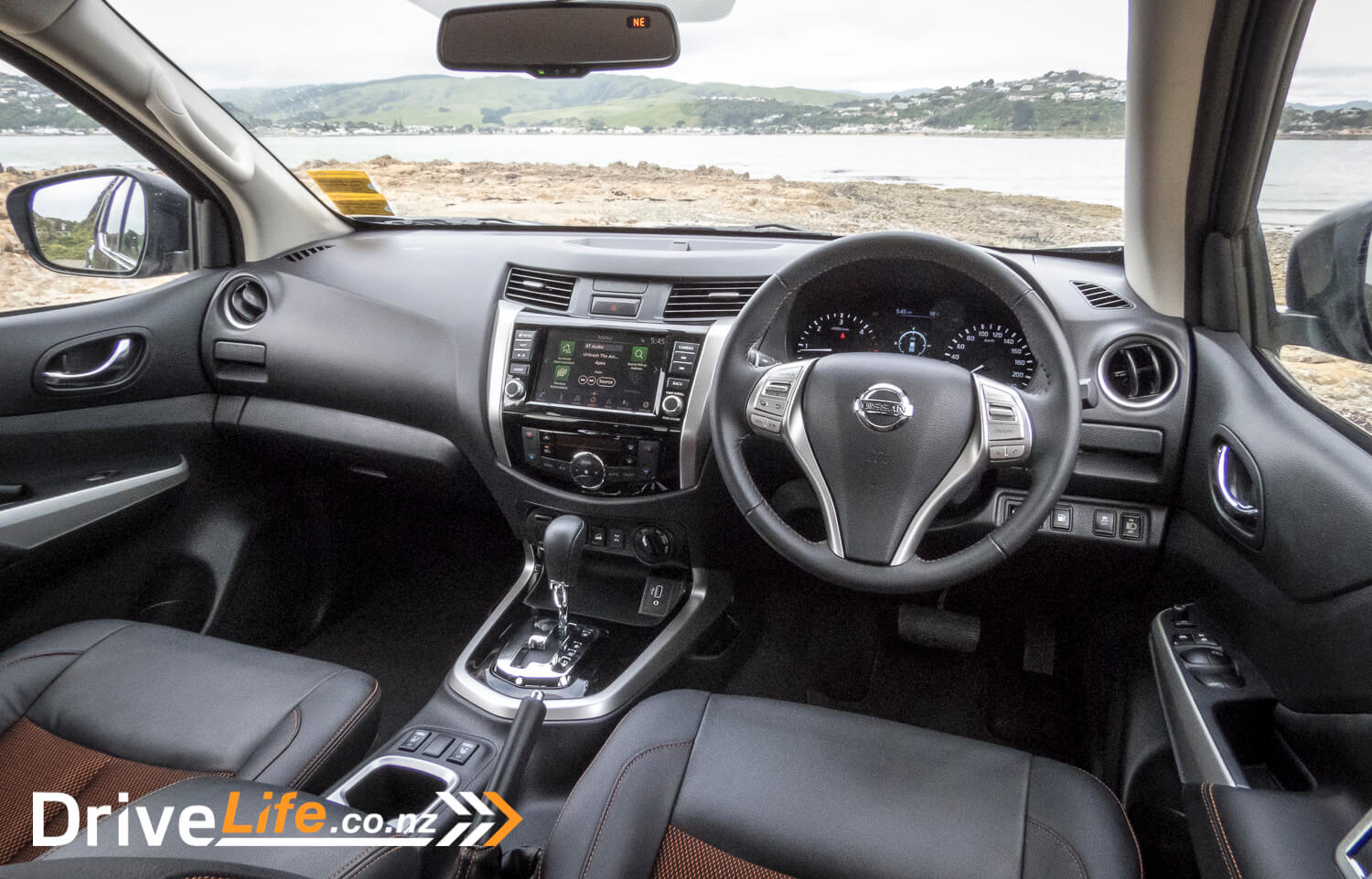
What Does The 2020 Nissan Navara Warrior Drive Like?
This is the part you’re actually interested in, isn’t it? But for the newcomers, we should clear-up this whole partnership with PremCar.
So, who are PremCar? Well, they were once called Tickford Vehicle Engineering before being bought out by ProDrive UK. For those unaware, before Ford Performance Vehicles (FPV) existed, there was Tickford Vehicle Engineering (TVE).
Although you might have guessed by now, PremCar’s reputation has been built upon adding hot-sauce to already hotted-up Fords. Their flagship build is a tyre-scorching 483kW Ford Falcon, dubbed the “Holy-Grail”.
However, PremCar does not discriminate with their clients. So, when Nissan dropped off an 4×4 Navara N-trek Dual Cab at the engineering consultancy, PremCar got busy ladling their special sauce onto the Navara to spawn the Warrior.
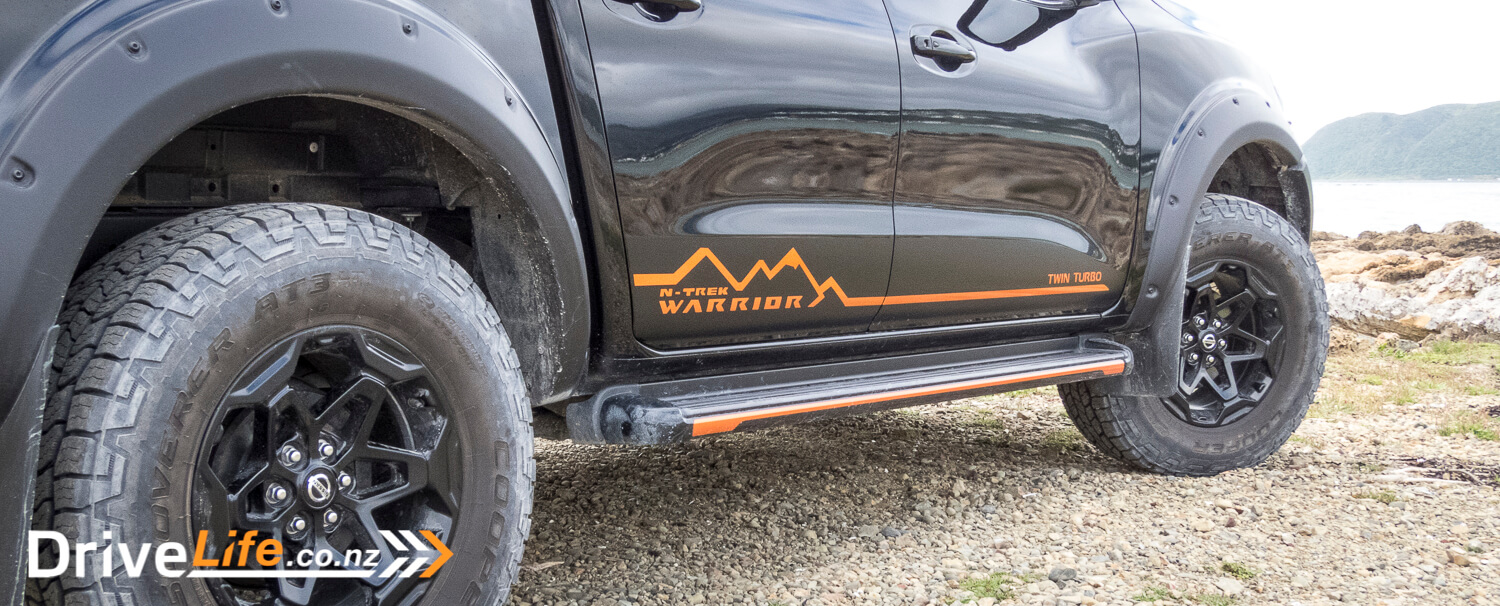
Underneath, PremCar extensively reworked the Navara’s suspension. The original components were ditched, in favour of twin-tube Munroe shocks, springs and Tenneco dampers. The spring rates were revised, tuned to be 6% softer in the front and 8% in the rear. The bump stops were also lengthened. Then, PremCar garnished the Warrior with 32’’ Cooper AT3 LT tyres (LT – stands for light truck), on 17” alloys.
So the spec sheet looks good – what’s the actual result? On-road, the Warrior becomes the big friendly giant. Genuinely!
The Warrior’s on-road manners were excellent for such a large ute, especially in terms of ride quality.
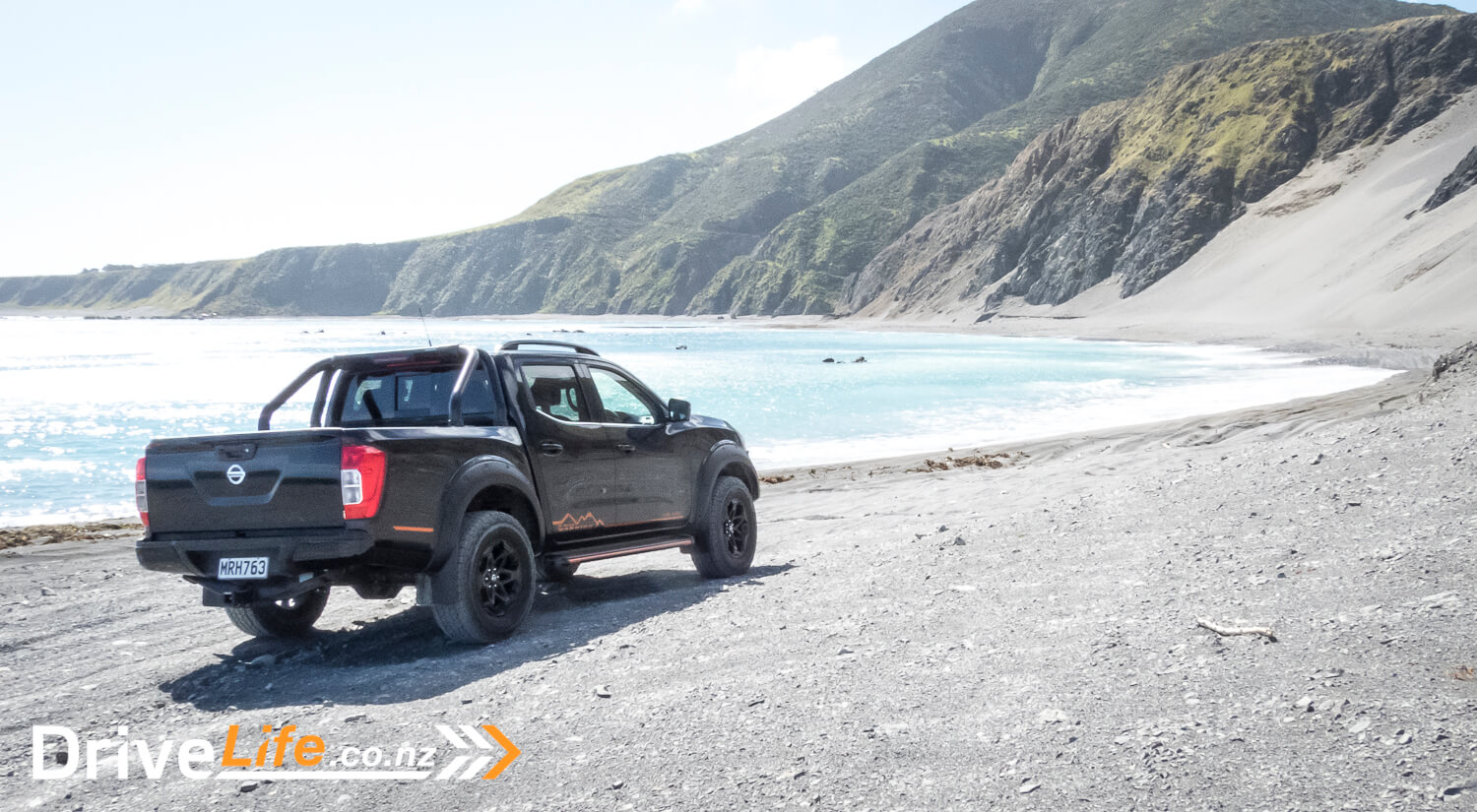
Many utes struggle to achieve a liveable ride quality, yet alone, a comfortable one. The Warrior, on the other hand, easily surpasses your average ute.
Given how tall the Warrior is, you’d be forgiven for thinking that this ute would roll in a corner like a boat in a tall swell. In reality, the Warrior’s manages body-roll well, bettering many utes, even those lower-to the ground. The cornering composure was an unexpected surprise, much like the overall NVH levels – cabin noise is decently suppressed inside the Warrior.
Overall, I truly enjoyed running my motorway commute in the Warrior. You can eye-ball bus drivers from your elevated seat, whilst enjoying view over the plebeians in their crossovers. Sure, the Warrior is 5.4m of hulking mass, but all the cameras make it more liveable around town.
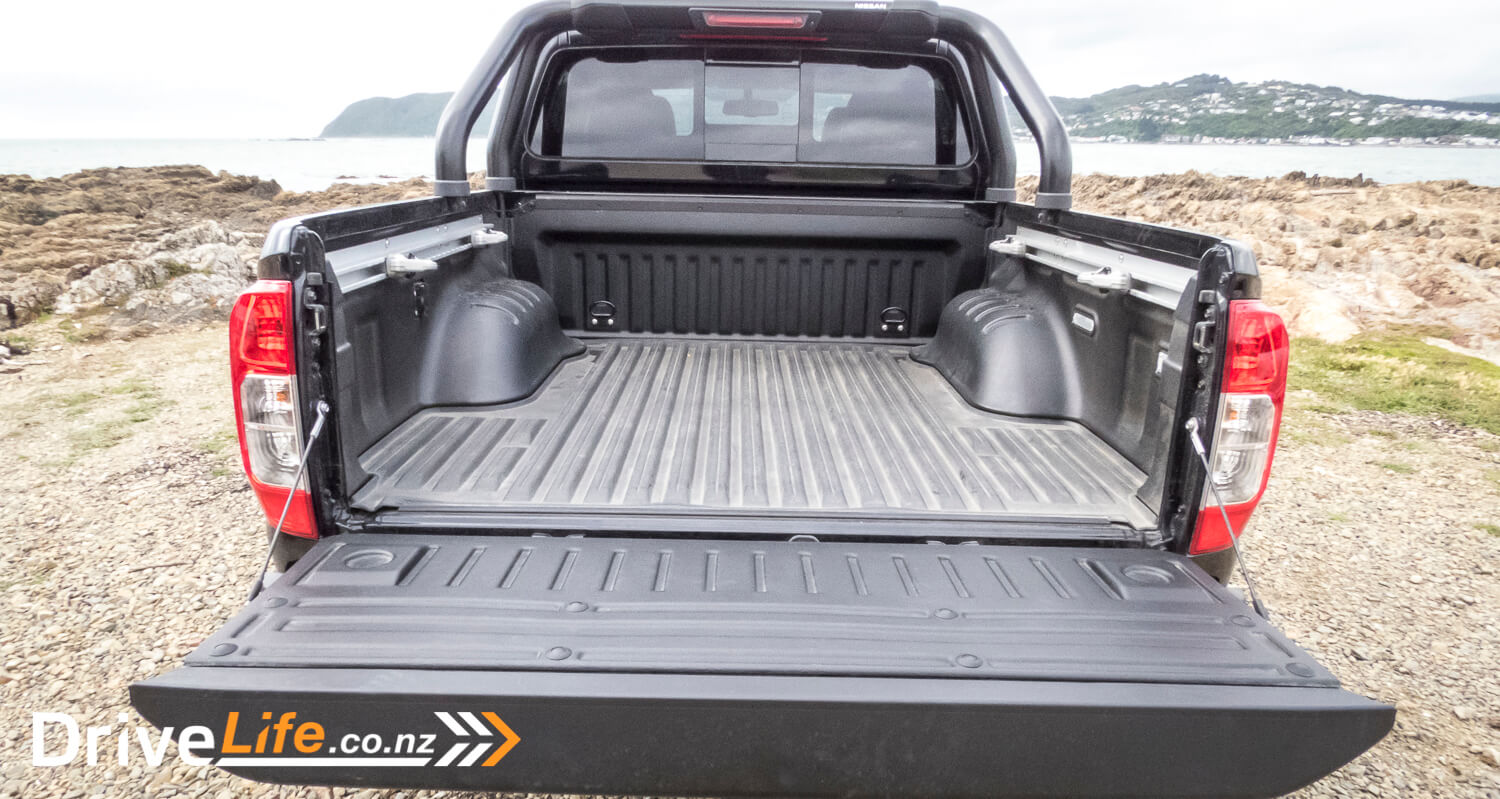
As a side note, it’s worthwhile knowing that the Navara’s suspension is a bit of an exception amongst other utes. The range uses coil-springs for rear suspension over the traditional leaf spring you’d find on a Hilux or a Ranger. From an engineering standpoint, coils will generally outperform leaf springs in ride quality terms.
The compromise, and there’s always one, is that coil springs don’t manage weight quite as well as a leaf spring. The result is that Warrior only has a tray payload of 724kg, whereas many competitors are delivering around 1-tonne these days.
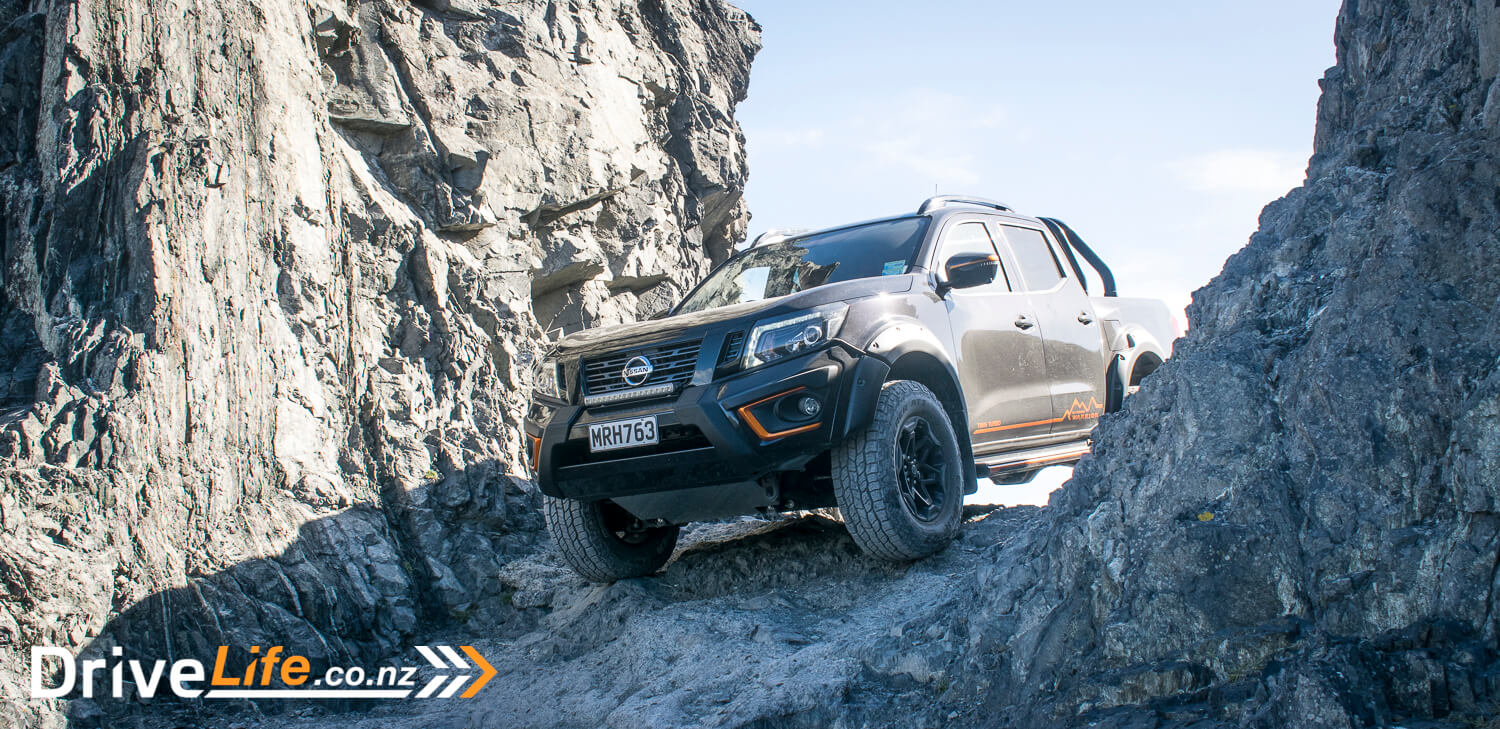
Okay, we know it’s a comfortable ute on-road. But c’mon, tell me about off-road?
How would I describe the Warrior’s off-ability? Do you understand the phrase “brought a gun to knife fight”?
That describes my experience with the Warrior anyway. For our test, we took the Warrior on a short jaunt out on the south coast of Wellington around Red Rocks for a few photos. The terrain was enough to require a vehicle suited for the job, but was nothing too strenuous. We certainly weren’t going to roll this thing over in a ditch!
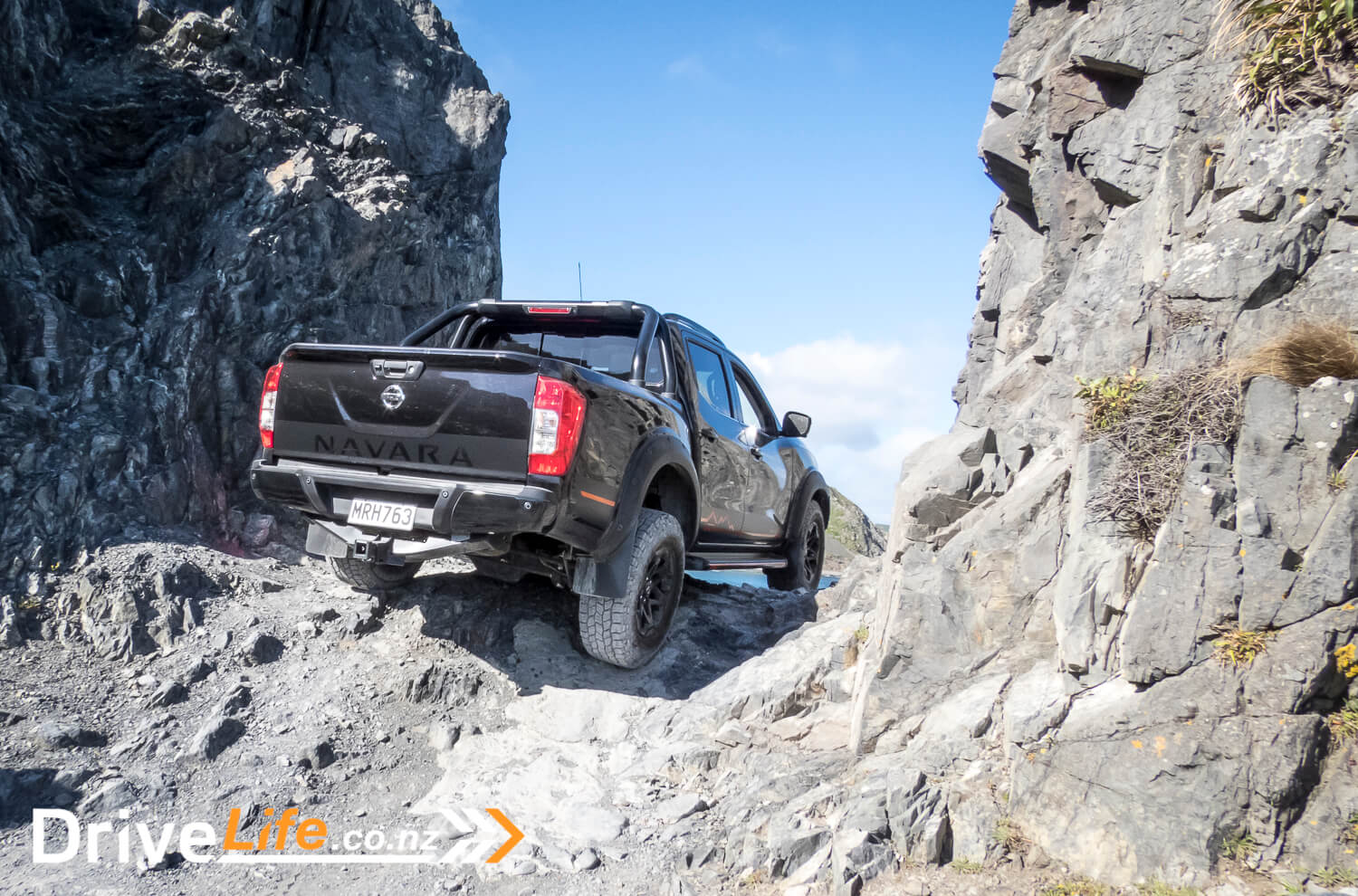
As expected, the Warrior was unfazed by our little expedition. Much like the ride on-road, the Warrior felt exceptionally composed across the loose rock and sandy terrain. Again, PremCar’s suspension tuning wizardry shines through off-road as much as it did on-road. The Warrior feels stable and planted, hunkering down more with pace. It will settle itself quickly over the harsher stuff without too much undulation.
“Confidence inspiring” is a phrase that’s thrown about a lot, yet the Warrior can easily take you much further than your natural ability will permit.
We also tested out the hill-descent control, which works excellently, if a tad noisy.
So the ute built to take on the Australian outback does rather well off-road. Surprised? Me neither.
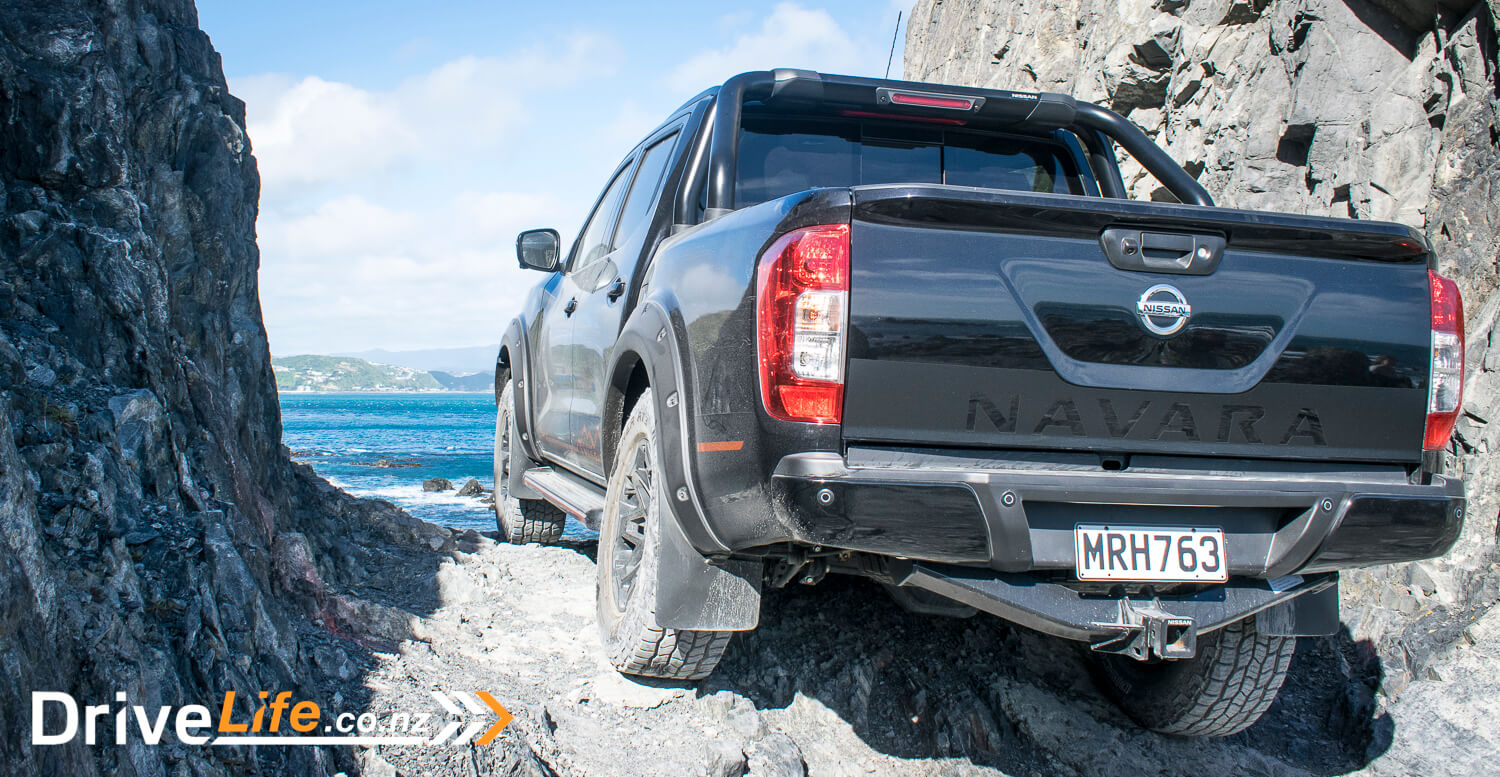
Powering the Warrior is Nissan’s 2.3L twin-turbo diesel engine, plucked straight from the regular Navara range. The unit produces 140kW of power and 450Nm of torque, paired with a 7-speed automatic with selectable gearing via dial of 2H – 4H and 4L. Much like the Warrior’s competitors from Toyota and Ford, the engine is unmodified from the factory.
During our time with the Warrior, we averaged a fuel economy of 10.0L/100kms, which is about what you’d expect from a run-of-the-mill turbodiesel ute, but is much higher than the claimed figure of 7.0L/100kms from Nissan.
Nissan’s turbo diesel has more than enough grunt to get the job done. Similar can be said for the automatic transmission, which does the trick without much fuss or flair. Overall, the performance is satisfactory. But only satisfactory. For example, the engine isn’t as reassuringly smooth and powerful as the Toyota Hilux’s 2.8L turbo diesel.
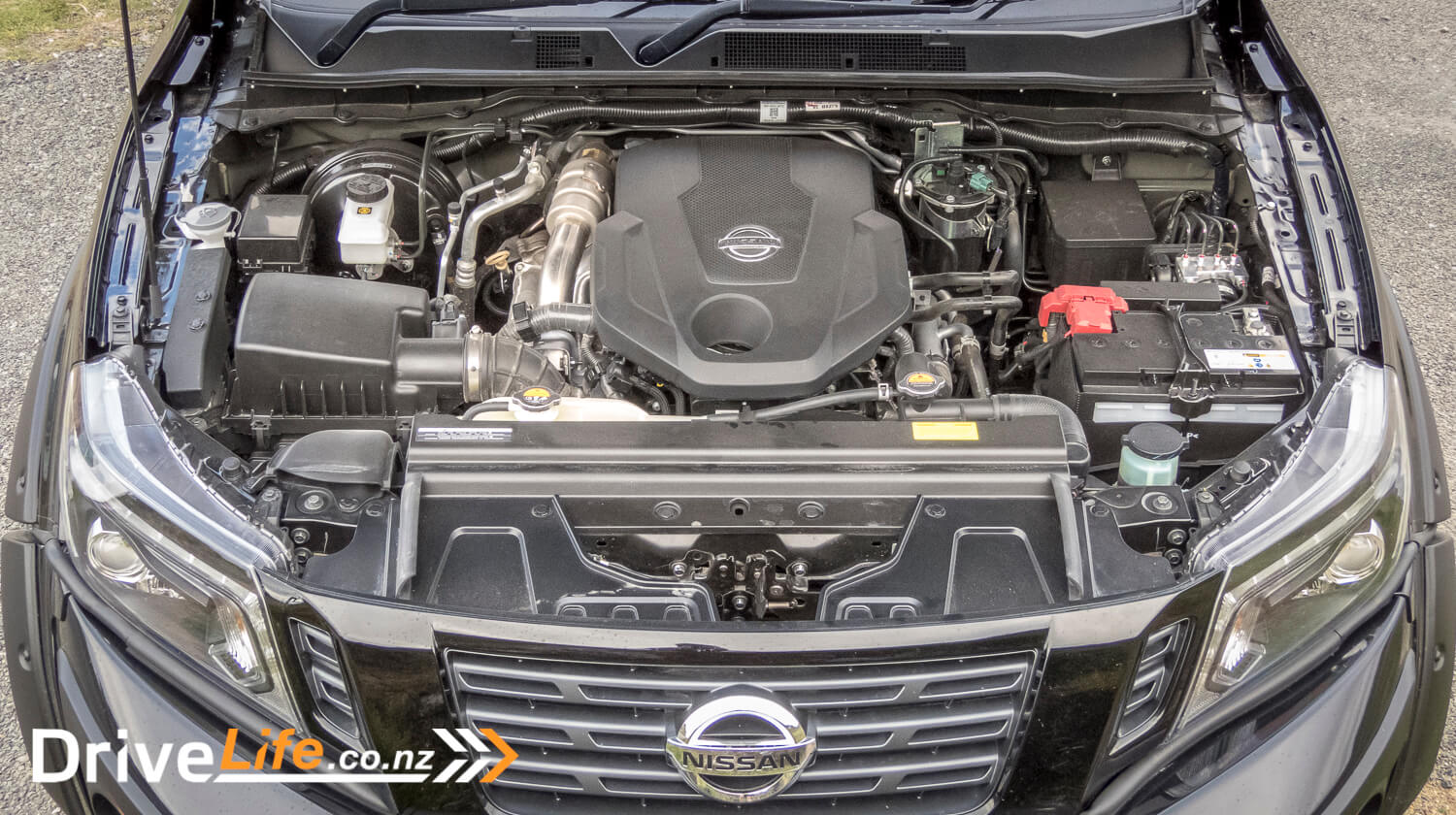
Also, much of the engine performance is delivered in the low-mid range, but it will start to gasp as you push it higher. In the real world, you can get off-the-line reasonably quickly, but you might notice the engine being particularly more laboured when trying to pass on the motorway.
Granted, the low-down performance should perform well for all the ute duties, such as towing and off-roading. The powertrain is good for an uncompromised tow-rating of 3,500kg braked, 750kg unbraked, which a Ranger Raptor cannot lay claim to. I also never felt short of power on our jaunt off-road, plus the torque is exactly where you want it. So, the shortcomings are mainly noticeable on-road.
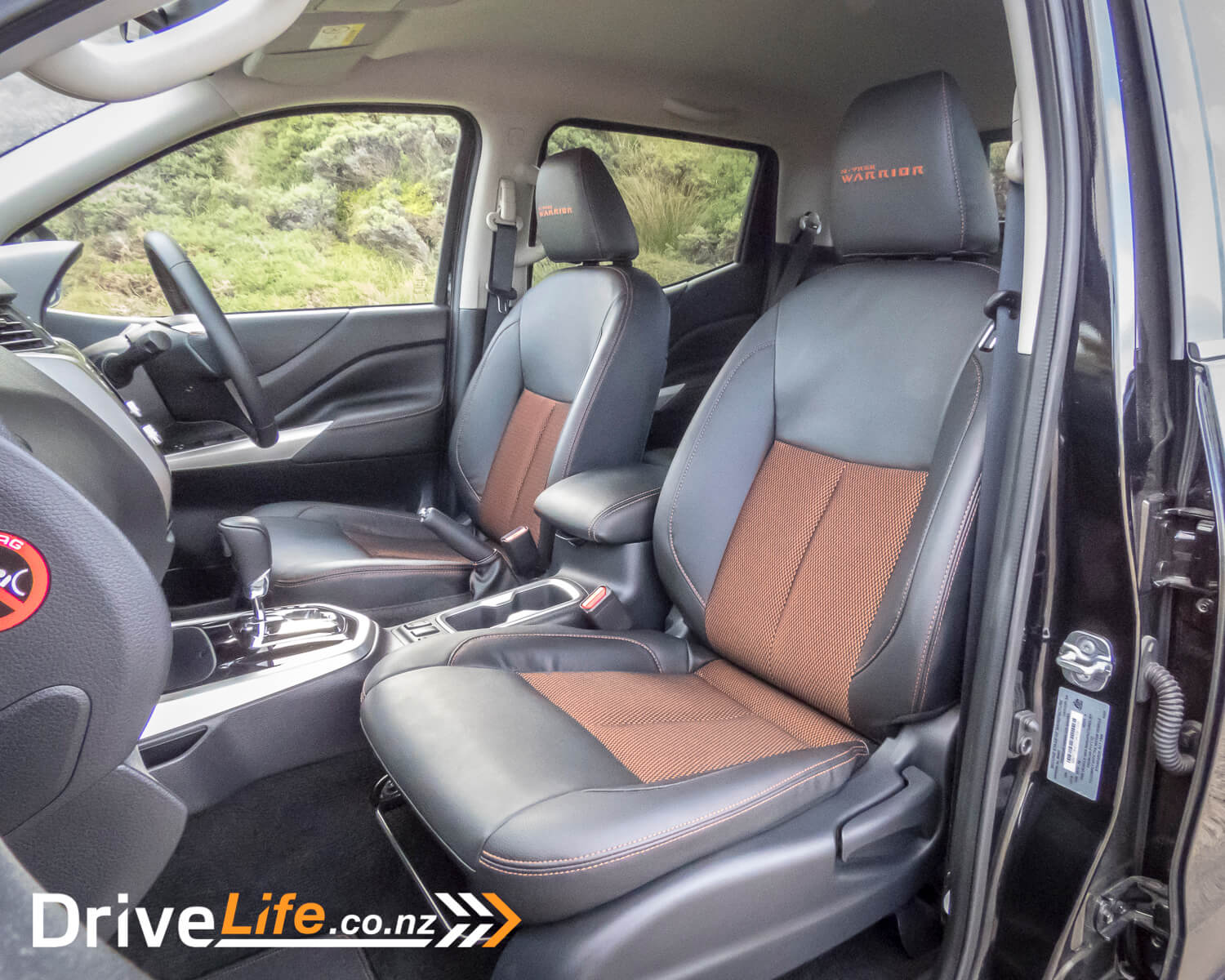
This leads us to perhaps the greatest shortcoming of the Warrior, which is in the driver’s tech department. To describe the situation, the term “scant”, would be appropriate.
The Warrior misses out on many features from 2021’s vehicle tech catalogue. This means no adaptive cruise, blind-spot monitoring, forward collision warning and autonomous emergency braking, amongst several others.
The problem largely stems from the D23 Navara platform it’s built off, which was first released in 2014. Although the next Navara facelift will amend this, a new Warrior is yet to be confirmed.
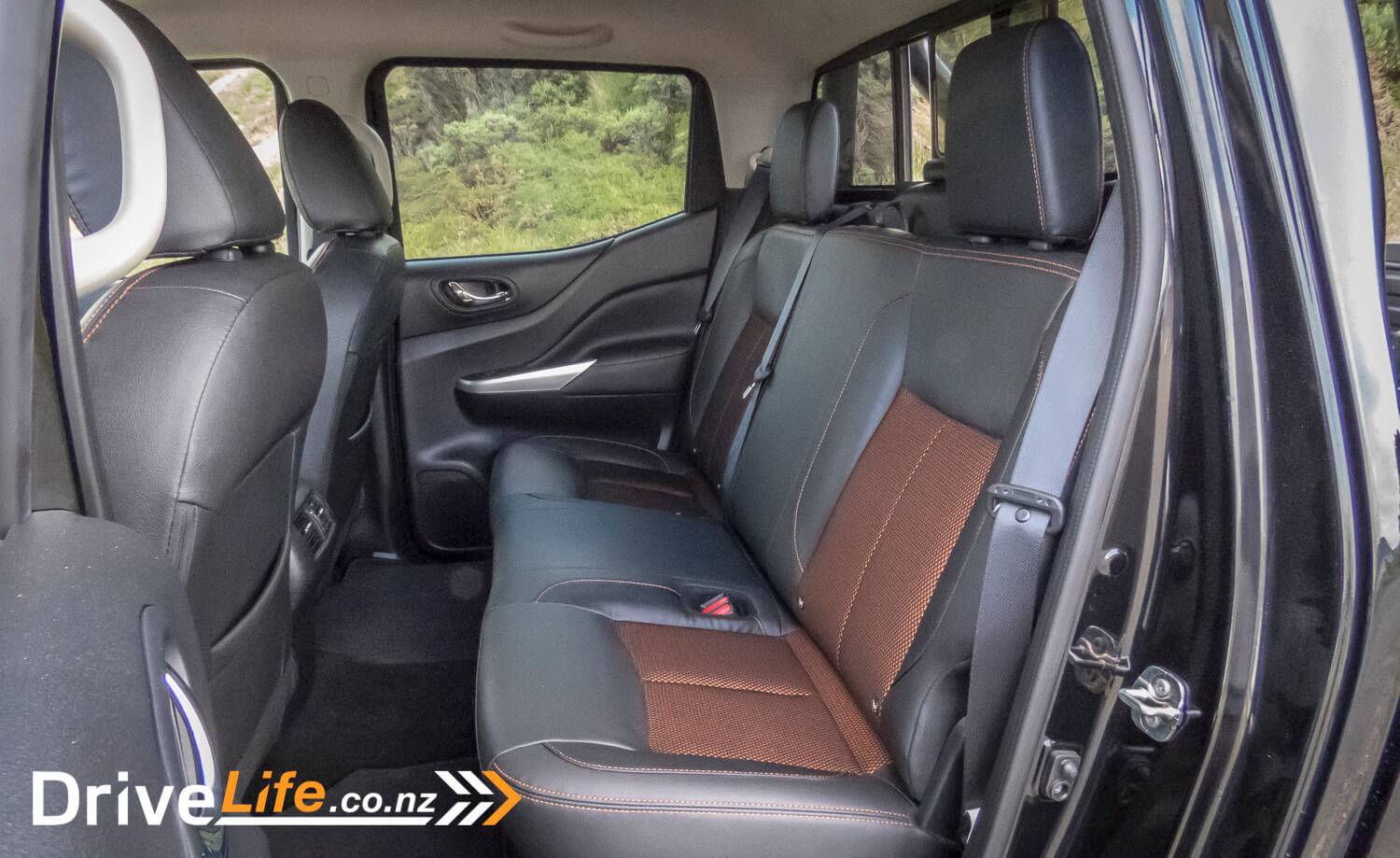
I imagine the average Warrior buyer won’t be too bothered by the lack of driver tech, but it is still something to consider when you’re about to fork over $76,999. Plus, adaptive cruise is one of those modern must-haves in a new vehicle, in my opinion. The others, you can live without.
Despite the lack of modern safety gear, the Warrior compensates in another unlikely area. Street-cred. This obviously isn’t the most rational trade-off; Street-cred over safety, but personality sells to an enthusiast.
During our week testing the Warrior, I can personally vouch that the Warrior draws attention. I had ute enthusiasts giving us an East Coast wave, or a thumbs-up while out at Red Rocks.
The best endorsement for the Navara Warrior came directly from an off-roading weekend warrior themselves. It had been some time since I’d been out around Red Rocks last, and to ensure I wasn’t the fool with a tool, I asked this kind bloke for an off-road pointer.
His response? “Mate, you’ve got a Warrior” “Don’t worry about it”.
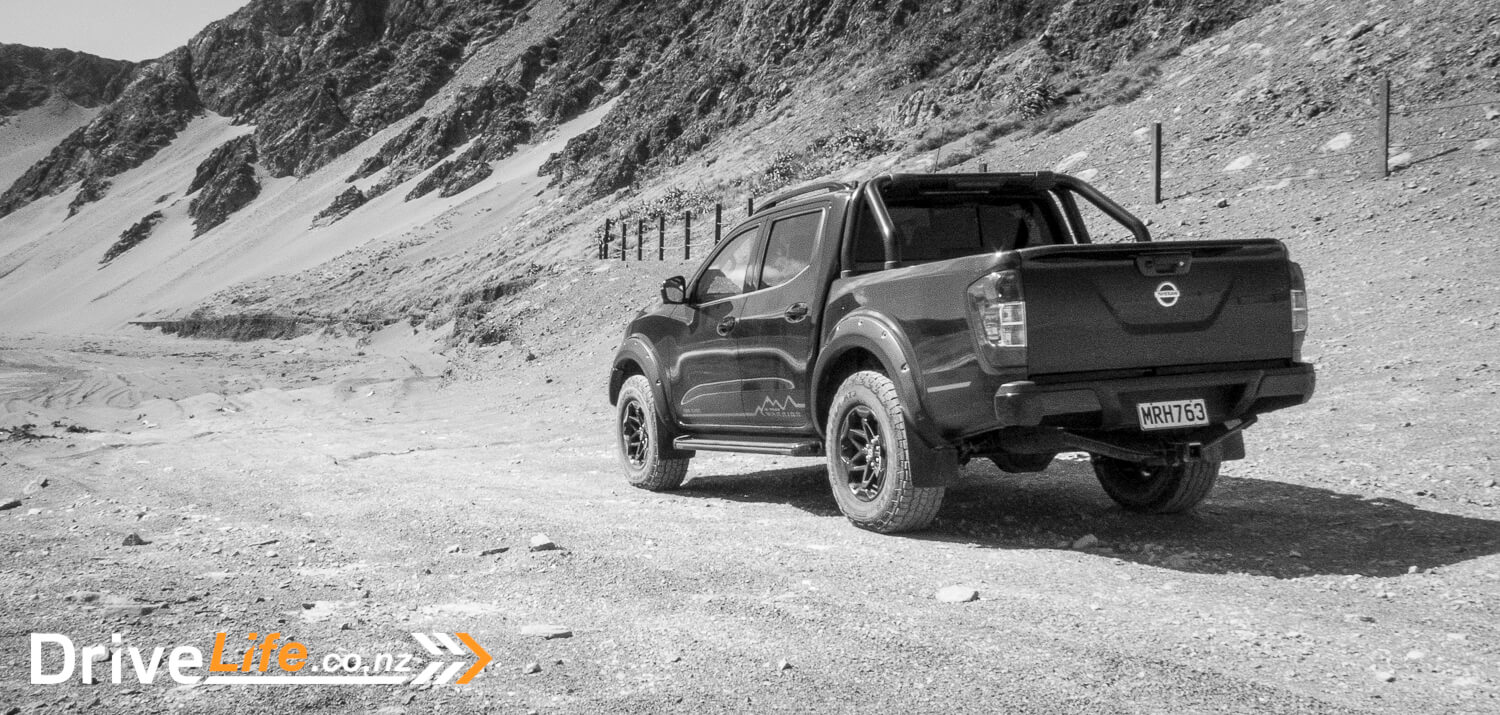
What’s The Competition For The 2020 Nissan Navara Warrior?
| Brand/Model | Engine | Power (kW)/Torque (Nm) | Economy, L/100km | Tow Rating, Kg (Unbraked/Braked) | Price |
| Volkswagen Amarok Aventura | 3-litre 6-cylinder turbo diesel | 190/580 | 9.5 | 750/3500 | $90,000 |
Ford Ranger Raptor | 2-litre 4-cylinder twin-turbo diesel | 157/500 | 8.2 | 750/2500 | $85,490 |
| Toyota Hilux Mako | 2.8-litre 4-cylinder turbodiesel | 150/500 | 7.9 | 750/3500 | $79,990 |
| Nissan Navara N-trek Warrior | 2.3-litre 4-cylinder twin-turbo diesel | 140/450 | 7.0 | 750/3500 | $76,990 |
| Isuzu D-Max X-terrain | 3-litre 4-cylinder turbodiesel | 140/450 | 8.0 | 750/3500 | $75,490 |
| Volkswagen Amarok Sportline | 3-litre 6-cylinder turbo diesel | 190/580 | 9.5 | 750/3500 | $75,000 |
Ford Ranger Wildtrak | 2-litre 4-cylinder twin-turbo diesel | 157/500 | 8.2 | 750/2500 | $73,490 |
All utes listed are double-cab variants.
2020 Nissan Navara Warrior – Specifications
Pros
- Excellent ride quality on and off-road
- Off-road capability
- Staunch looks
- Uncompromised tow rating
- Unique in the ute crowd
- Cheaper than the main competition
Cons
- Lacking the latest tech
- Middle of the road engine performance
- Compromised tray load capacity
- Basic interior
- Poor interior storage cubbies
